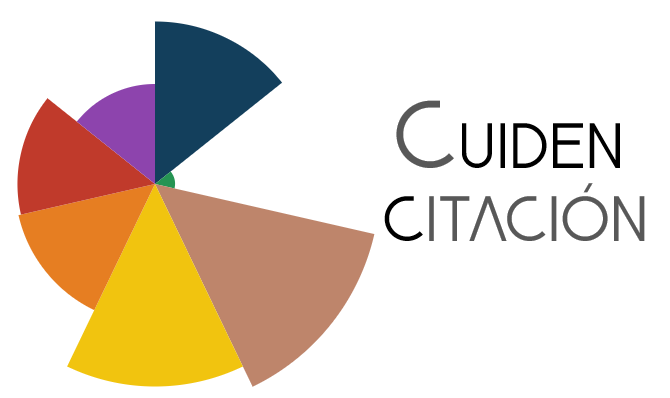Difficulties and strategies related to blood donation in a hemotherapy service
DOI:
https://doi.org/10.15253/2175-6783.20212270830Keywords:
Nursing; Hemotherapy Service; Blood Donors; Health; Strategies.Abstract
Objective: to analyze the aspects that hinder blood donation and strategies to attract donors. Methods: qualitative study conducted with 12 donors. The data was collected through semi-structured interviews and analyzed using Content Analysis. Results: regarding the complicating aspects, the lack of time and little flexibility in service hours, the displacement in accessing the service and the fear of the donation process were scored. As strategies for attraction, the interviewees talked about the dissemination and internal campaigns in companies, education in schools and universities, loyalty of donors, flexibility in the hours of the blood center and mobile units for blood donation at strategic points in the city. Conclusion: donors pointed out difficulties and suggestions for strategies, constituting relevant information for innovative proposals that help in the process of attracting new blood donors.
References
Carlesso L, Santos CF, Guimarães RFS, Silva SL, Viero V, Vieira SV, et al. Strategies implemented in hemotherapy services to increase blood donation. Rev Bras Promoç Saúde. 2017; 30(2):213-20. doi: http://doi.org/10.5020/18061230.2017.p213
Matos Junior RA, Andrade NBS. Enfermeiro como protagonista na segurança transfusional no serviço de hemoterapia: uma revisão integrativa. CGCBS [Internet]. 2020 [cited Apr. 10, 2021]; 6(1):89-98. Available from: https://periodicos.set.edu.br/cadernobiologicas/article/view/7857
Cicolini G, Comparcini D, Alfieri S, Zito E, Marta E, Tomietto M, et al. Nursing students’ knowledge and attitudes of blood donation: a multicentre study. J Clin Nurs. 2019; 28(9-10):1829-38. doi: https://doi.org/10.1111/jocn.14792
Souza LK, Freitas LBL. A doação na literatura científica nacional: contribuições à psicologia moral. Psico-USF. 2019; 24(1):159-71. doi: https://dx.doi.org/10.1590/1413-82712019240113
Arruda ABL, Gomes FVBAF, Albuquerque JSA, Gondim YM, Arruda AAL. Perfil dos doadores de sangue de primeira vez de um serviço de hemoterapia. Braz J Hea Rev. 2019; 2(6):5135-47. doi: http://dx.doi.org/10.34119/bjhrv2n6-020
Locks MOH, Salum NC, Barros BS, Matos E, Anders JC, Schneider DG. Profile of blood donors who presented adverse reactions to the donation. Rev Bras Enferm. 2019; 72(1):81-7. doi: https://doi.org/10.1590/0034-7167-2018-0305
Tong A, Sainsbury P, Craig J. Consolidated criteria for reporting qualitative research (COREQ): a 32-item checklist for interviews and focus groups. Int J Qual Health Care. 2007; 19(6):349-57. doi: https://doi.org/10.1093/intqhc/mzm042
Minayo MCS. O desafio do conhecimento: pesquisa qualitativa em saúde. São Paulo: Hucitec; 2014.
Asamoah‐Akuoko L, Hassall OW, Bates I, Ullum H. Blood donors’ perceptions, motivators and deterrents in Sub‐Saharan Africa – a scoping review of evidence. Br J Haematol. 2017; 177:864-77. doi: https://doi.org/10.1111/bjh.14588
Silva KFN, Felix MMS, Cruz LF, Barichello E, Pires PS, Mattia ALD, et al. Effects of music on the anxiety of blood donors: randomized clinical trial. Acta Paul Enferm. 2021; 34:eAPE00461. doi: https://dx.doi.org/10.37689/acta-ape/2021ao00461
Pereira JR, Shigaki HB. Influências subjetivas do ato de doar sangue: aspectos motivacionais, experienciais e simbólicos. Rev Horizontes Interdisciplinares Gestão [Internet]. 2018 [cited Apr. 16, 2021]; 2(1):106-30. Available from: http://hig.unihorizontes.br/index.php/Hig/article/view/45/83
France CR, France JL. Estimating the risk of blood donation fainting for self versus others: the moderating effect of fear. Transfusion. 2019; 59(6):2039-45. doi: https://doi.org/10.1111/trf.15225
France CR, France JL. Fear of blood draw is associated with inflated expectations of faint and prefaint reactions to blood donation. Transfusion. 2018; 58(10):2360-64. doi: https://doi.org/10.1111/trf.14934
Locks MOH, Salum NC, Barros BS, Matos E, Anders JC, Schneider DG. Profile of blood donors who presented adverse reactions to the donation. Rev Bras Enferm. 2019; 72(1):81-7. doi: https://dx.doi.org/10.1590/0034-7167-2018-0305
Pereira JR, Sousa CV, Shigaki HB, Matos EB. Análise da intenção de doar sangue sob a perspectiva de doadores e não doadores: uma comparação entre grupos. Rev Gestão Planej. 2019; 20:696-713. doi: http://doi.org/10.21714/2178-8030gep.v.20.6209
Hu H, Wang T, Fu Q. Psychological factors related to donation behaviour among Chinese adults: results from a longitudinal investigation. Transfus Med Rev. 2017; 27(Suppl 5):335-41. doi: https://doi.org/10.1111/tme.12422
Bousquet HM, Aleluia ÍRS, Luz LA. Fatores decisivos e estratégias para captação de doadores em hemocentros: revisão da literatura. Rev Ciênc Méd Biol. 2018; 17(1):84-8. doi: https://doi.org/10.9771/cmbio.v17i1.17510
Souza LK, Martínez SBS. A escola na promoção de ações voltadas à doação. Rev Interinst Psicol. 2020; 13(3):1-16. doi: https://dx.doi.org/10.36298/gerais202013e15300
Downloads
Published
How to Cite
Issue
Section
License
Copyright (c) 2021 Rev Rene

This work is licensed under a Creative Commons Attribution 4.0 International License.









